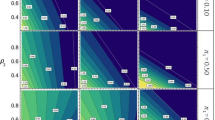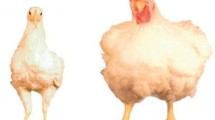Abstract
Count traits are usually explored in livestock breeding programs, and they usually do not fit into normal distribution, requiring alternatives to adjust the phenotype to estimate accurate genetic parameters and breeding values. Alternatively, distribution such as Poisson can be used to evaluate count traits. This study aimed to compare and discuss the genetic evaluation for oocyte and embryo counts considering Gaussian (untransformed variable — LIN; transformed by logarithm — LOG; transformed by Anscombe — ANS) and Poisson (POI) distributions. The data comprised 11,343 total oocytes (TO), viable oocytes (VO), cleaved embryos (CE), and viable embryo (VE) records of ovum pick-up from 1740 Dairy Gir heifers and cows. The genetic parameters and breeding values were estimated by the MCMCglmm package of the R software. The posterior means of heritability varied from 0.40 (LIN) to 0.49 (POI) for TO, 0.39 (LIN) to 0.49 (POI) for VO, 0.30 (LOG) to 0.41 (POI) for cleaved embryos, and 0.19 (LIN) to 0.32 (POI) for viable embryos. The posterior means of repeatability varied from 0.56 (LIN) to 0.65 (POI) for TO, 0.53 (LOG) to 0.63 (POI) for VO, 0.44 (LOG) to 0.60 (POI) for CE, and 0.36 (LOG) to 0.56 (POI) for VE. Deviance information criterion and mean squared residuals indicated that POI model should be used for the genetic evaluation of embryo and oocyte count traits. Spearman’s rank correlation between estimated breeding value (EBV) for embryo and oocyte count traits computed by POI, LOG, and ANS models was high (ranging from 0.77 to 0.99), indicating little reranking among the best animals. The POI model is the most adequate for genetic evaluation, resulting in more reliable EBV of oocyte and embryo count traits for Dairy Gir cattle.





Similar content being viewed by others
Data availability
The datasets analyzed during the current study are not publicly available due to the request of the data provider.
References
Aguilar I, Fernandez EN, Blasco A et al (2020) Effects of ignoring inbreeding in model-based accuracy for BLUP and SSGBLUP. J Anim Breed Genet 137:356–364. https://doi.org/10.1111/jbg.12470
Asada Y, Terawaki Y (2002) Heritability and repeatability of superovulatory responses in Holstein population in Hokkaido, Japan. Asian-Australasian J Anim Sci 15:944–948. https://doi.org/10.5713/ajas.2002.944
Ayres DR, Pereira RJ, Boligon AA et al (2013) Linear and Poisson models for genetic evaluation of tick resistance in cross-bred Hereford x Nellore cattle. J Anim Breed Genet 130:417–424. https://doi.org/10.1111/jbg.12036
Bényei B, Gáspàrdy A, Komlósi I, Pécsi A (2004) Repeatability and heritability of ovulation number and embryos in dam-daughters pairs in superovulated Holstein-Friesian cows. Reprod Domest Anim 39:99–102. https://doi.org/10.1111/j.1439-0531.2004.00487.x
Cornelissen MAMC, Mullaart E, Van der Linde C, Mulder HA (2017) Estimating variance components and breeding values for number of oocytes and number of embryos in dairy cattle using a single-step genomic evaluation. J Dairy Sci 100:4698–4705. https://doi.org/10.3168/jds.2016-12075
Feltes GL, Michelotti VT, Oliveira MM et al (2022) Impact of different numbers of milk test-day records during lactation on the reliability of estimated breeding values. Trop Anim Health Prod 54:1–11. https://doi.org/10.1007/s11250-022-03288-3
Geweke J (1991) Evaluating the accuracy of sampling-based approaches to the calculation of posterior moments. Staff Report 148, Federal Reserve Bank of Minneapolis
Gorjanc G, Bijma P, Hickey JM (2015) Reliability of pedigree-based and genomic evaluations in selected populations. Genet Sel Evol 47. https://doi.org/10.1186/s12711-015-0145-1
Hadfield JD, Nakagawa S (2010) General quantitative genetic methods for comparative biology: phylogenies, taxonomies and multi-trait models for continuous and categorical characters. J Evol Biol 23:494–508. https://doi.org/10.1111/j.1420-9101.2009.01915.x
Heidelberger P, Welch PD (1983) Simulation run length control in the presence of an initial transient. Oper Res 31:1109–1144. https://doi.org/10.1287/opre.31.6.1109
Jaton C, Koeck A, Sargolzaei M et al (2016a) Genetic analysis of superovulatory response of Holstein cows in Canada. J Dairy Sci 99:3612–3623. https://doi.org/10.3168/jds.2015-10349
Jaton C, Koeck A, Sargolzaei M et al (2016b) Short communication: genetic correlations between number of embryos produced using in vivo and in vitro techniques in heifer and cow donors. J Dairy Sci 99:8222–8226. https://doi.org/10.3168/jds.2016-11356
König S, Bosselmann F, von Borstel UU, Simianer H (2007) Genetic analysis of traits affecting the success of embryo transfer in dairy cattle. J Dairy Sci 90:3945–3954. https://doi.org/10.3168/jds.2007-0089
Merton JS, Ask B, Onkundi DC et al (2009) Genetic parameters for oocyte number and embryo production within a bovine ovum pick-up-in vitro production embryo-production program. Theriogenology 72:885–893. https://doi.org/10.1016/j.theriogenology.2009.06.003
Naya H, Urioste JI, Chang Y-M et al (2008) A comparison between Poisson and zero-inflated Poisson regression models with an application to number of black spots in Corriedale sheep. Genet Sel Evol 40:379–394. https://doi.org/10.1051/gse:2008010
Oliveira H, Brito L, Silva F et al (2019) Genomic prediction of lactation curves for milk, fat, protein, and somatic cell score in Holstein cattle. J Dairy Sci 102:452–463. https://doi.org/10.3168/jds.2018-15159
Panetto JCCCC, Gutiérrez JPP, Ferraz JBSBS et al (2010) Assessment of inbreeding depression in a Guzerat dairy herd: effects of individual increase in inbreeding coefficients on production and reproduction. J Dairy Sci 93:4902–4912. https://doi.org/10.3168/jds.2010-3197
Parker Gaddis KL, Dikmen S, Null DJJ et al (2017) Evaluation of genetic components in traits related to superovulation, in vitro fertilization, and embryo transfer in Holstein cattle. J Dairy Sci 100:2877–2891. https://doi.org/10.3168/jds.2016-11907
Perez BC, Peixoto MGCD, Bruneli FT et al (2016) Genetic analysis of oocyte and embryo production traits in Guzerá breed donors and their associations with age at first calving. Genet Mol Res 15:1–9. https://doi.org/10.4238/gmr.15027583
Perez BC, Silva FF, Ventura RV et al (2017) Count Bayesian models for genetic analysis of in vitro embryo production traits in Guzerá cattle. Animal 11:1440–1448. https://doi.org/10.1017/S175173111700012X
Plummer M, Best N, Cowles K, Vines K (2006) CODA: convergence diagnosis and output analysis for MCMC. R news 6(1):7–11
R Core Team (2017) R: A language and environment for statistical computing. R Foundation for Statistical Computing, Vienna. URL https://www.R-project.org/
Raftery AE, Lewis SM (1991) Comment: one long run with diagnostics: implementation strategies for Markov Chain Monte Carlo. Stat Sci 7:493–497
Santos DJA, Peixoto MGCD, Aspilcueta Borquis RR et al (2014) Predicting breeding values for milk yield of Guzerá (Bos indicus) cows using random regression models. Livest Sci 167:41–50. https://doi.org/10.1016/j.livsci.2014.05.023
Spiegelhalter DJ, Best NG, Carlin BP, van der Linde A (2002) Bayesian deviance with discussion JRSSB 2002. Appl Stat 46:261–304. https://doi.org/10.2307/2986270
Tonhati H, Lôbo RB, Oliveira HN (1998) Repeatability and heritability of response to superovulation in Holstein cows. Theriogenology 51:1151–1156
Ventura HT, e Silva FF, Varona L et al (2015) Comparing multi-trait Poisson and Gaussian Bayesian models for genetic evaluation of litter traits in pigs. Livest Sci 176:47–53. https://doi.org/10.1016/j.livsci.2015.03.030
Viana JHM (2019) Statistics of embryo production and transfer in domestic farm animals. Divergent trends for IVD and IVP embryos. Embryo Technology Newsletter 38(4):2020
Vizoná RG, da Costa PB, Campolina Diniz Peixoto MG et al (2020) Genetic analysis of in-vitro embryo production traits in dairy Gir cattle. Theriogenology 148:149–161. https://doi.org/10.1016/j.theriogenology.2020.02.014
Acknowledgements
The authors thank the Fazendas do Basa for kindly providing the data for this study.
Funding
This work was supported by the Conselho Nacional de Desenvolvimento Científico e Tecnológico (CNPq) and the Coordenação de Aperfeiçoamento de Pessoal de Nível Superior (CAPES; Finance Code 001), Brazil, which partially funded this study.
Author information
Authors and Affiliations
Contributions
Giovani Luis Feltes: conceptualization, funding acquisition, methodology, investigation, data curation, formal analysis, software, writing — original draft, visualization. Gabriel Soares Campos: conceptualization, methodology, investigation, data curation, formal analysis, software, visualization. Fernanda Santos Silva Raidan: conceptualization, methodology, investigation, data curation, writing — review and editing. Luiz Fernando Rodrigues Feres: methodology, investigation, data curation, visualization. Virgínia Mara Pereira Ribeiro: investigation, data curation, visualization. Jaime Araujo Cobuci: conceptualization, funding acquisition, methodology, investigation, writing — review and editing.
Corresponding author
Ethics declarations
Ethical approval
This is an observational study. The Federal University of Rio Grande do Sul — UFRGS Research Ethics Committee has confirmed that no ethical approval is required.
Competing interests
The authors declare no competing interests.
Additional information
Communicated by: Maciej Szydlowski
Publisher's Note
Springer Nature remains neutral with regard to jurisdictional claims in published maps and institutional affiliations.
Rights and permissions
Springer Nature or its licensor (e.g. a society or other partner) holds exclusive rights to this article under a publishing agreement with the author(s) or other rightsholder(s); author self-archiving of the accepted manuscript version of this article is solely governed by the terms of such publishing agreement and applicable law.
About this article
Cite this article
Feltes, G.L., Campos, G.S., Raidan, F.S.S. et al. Comparing Bayesian models for the genetic evaluation of oocytes and embryo counts in Dairy Gir cattle. J Appl Genetics (2024). https://doi.org/10.1007/s13353-024-00862-3
Received:
Revised:
Accepted:
Published:
DOI: https://doi.org/10.1007/s13353-024-00862-3




